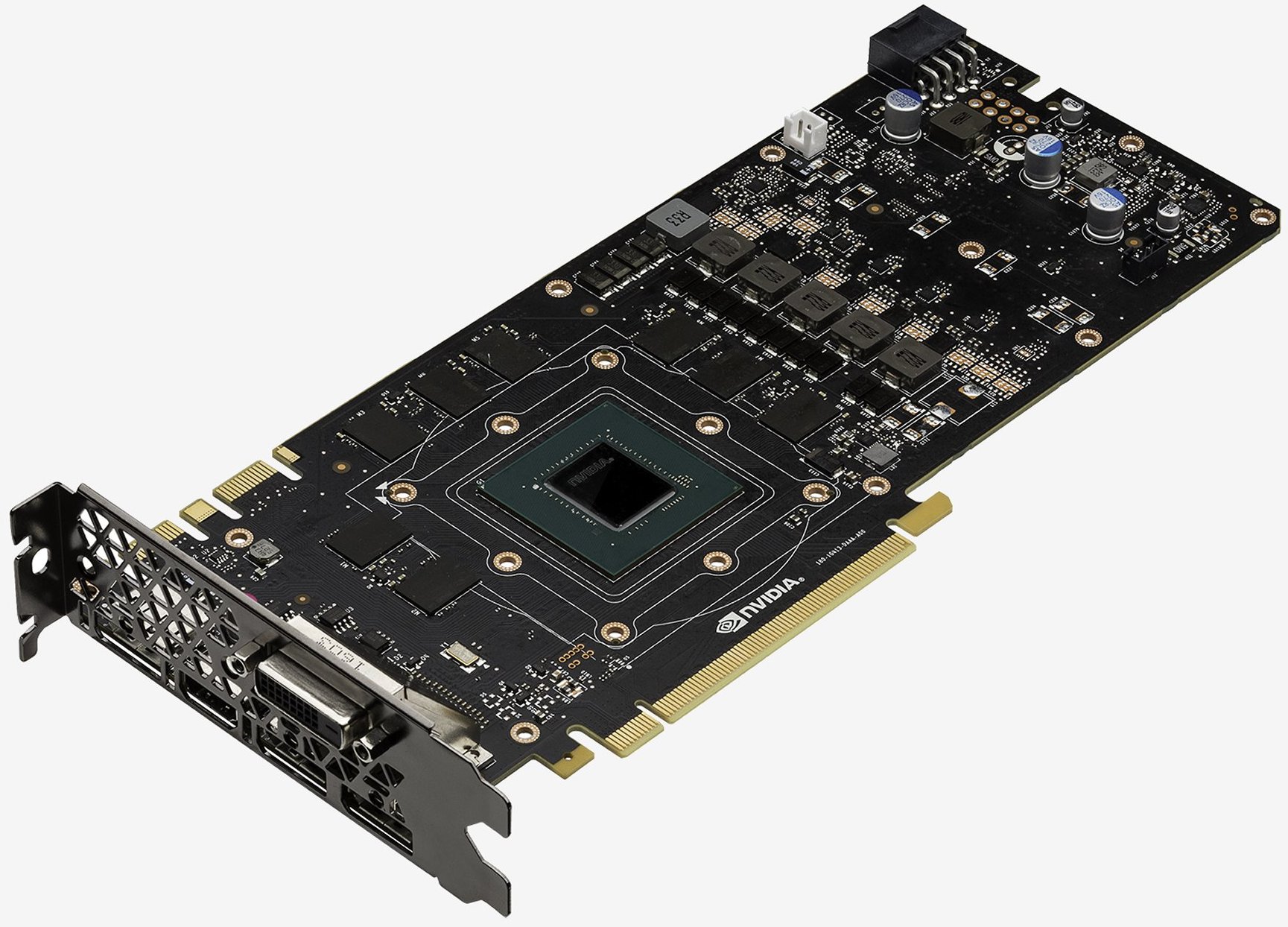- Aug 30, 2012
- 6,598
- Content source
- http://www.techspot.com/review/1174-nvidia-geforce-gtx-1080/

The GeForce GTX 1080, codenamed GP104-400, features a surprisingly small GPU - the die size is just 314mm2, roughly half that of the Titan X and 980 Ti. There are still 7.2 billion transistors crammed inside, just 10% fewer than the most complex Maxwell GPUs.
Nvidia has been able to squeeze so much into this small space thanks to the use of the 16nm FinFET process. This means Nvidia is now able to produce more complex GPUs with greater core counts, though that isn’t exactly what they have done here with the GTX 1080.
As with CPUs, one of the key defining aspects of GPU performance is core count. The GeForce GTX 680 had 1536 cores, or CUDA cores, as Nvidia calls them. The original Titan featured 2688 CUDA cores, while the Titan X received a whopping 3072 CUDA cores.
Nvidia tells us that the GTX 1080 is a good bit faster than the Titan X, so you might expect a similar or larger core count. To everyone's surprise at the heart of the GTX 1080 are just 2560 CUDA cores, 17% less than the Titan X and 9% less than the 980 Ti. Thus Pascal is not just more efficient, but thanks to the newer process, it's received a massive boost in frequency speed at which those cores can operate.

Compared to the Titan X and 980 Ti, the GTX 1080 runs its cores up to 61% faster, with a base clock speed of 1607MHz and boost as high as 1733MHz.
Further, the GTX 1080 only requires a single 8-pin PCI Express power connector with a TDP rating of just 180 watts, so on paper its power consumption is just 9% higher than the super-efficient GTX 980.

There was just one more ingredient that these high frequency cores required in order to get the job done: very fast memory. The solution here isn’t the hotly anticipated HBM2, but new GDDR5X memory. GDDR5X is designed to run at speeds of 10 - 14Gbps, which is twice that of GDDR5. In order to achieve this, the chip interface has been widened from eight nibbles (32 bit) to sixteen nibbles (64 bit).
The GTX 1080 Founders Edition we received to test came equipped with Micron's GDDR5X memory running at 10 Gbps, which is essentially 5GHz! That is a 43% increase over the GTX Titan X and GTX 980 Ti, both of which use GDDR5 memory running at 7 Gbps (1.7GHz).
Although memory is considerably faster, the 384-bit memory bus of the Titan X and 980 Ti has been downgraded to the same 256-bit bus used by the GTX 980 and thus limited to a 320GB/s memory bandwidth.
With performance expected to exceed even that of the Titan X, we can assume that the 1080 is going to be a bit starved for memory bandwidth, which means overclocking could be very beneficial assuming GDDR5X memory can be pushed higher (you can bet we'll try). So let's move on into testing
Full review
